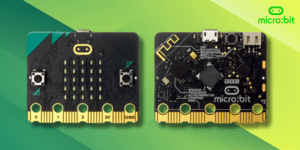You set the timer and your favorite meal is ready in just three minutes. You press the button on the remote control and you can watch your favorite show. You take your favorite vinyl disc from the library, drop the needle and enjoy the music after work. Contrary to appearances, these ordinary, everyday activities are closely related to electronics. In this article, we discuss several consumer electronics devices in terms of their basic internal structure and operating principle.
My neighbours like this song too
It is not difficult to notice that in the last few years, vinyl records are experiencing their second youth. It might seem that this is just a sentimental need to taste technology from before the CD era and even cassette tapes, but not only those. Vinyl records are the carrier that guarantees quality matching those of music reproduction. The device for playing vinyl records is called turntable. The principle of it is to drive the rotating platter with a motor, which, depending on the specificity of the vinyl record, rotates at 33⅓ RPM or 45 RPM. On the surface of the vinyl record there are microscopic irregularly shaped grooves which are a mechanical representation of the sound waveforms recorded and then pressed into the disc surface – it’s sort of like our fingerprints, which can give information about our identity. The irregularities are located inside the groove at an angle of 45° on its left and right slopes, and the diameter of a single groove is only a few tens of micrometers. Along with the rotation of the plate, a needle with a diameter of only a few dozen moves along these grooves. The irregular grooves shape causes the needle to vibrate. The needle vibrations are transferred to the cartridge with moving coils or magnets, where an electric voltage is generated, the waveform of which is compatible with the needle vibrations transmitted to the cartridge. The electrical signal from the cartridge is then formed in the preamplifier (built into the turntable or as an external device), where the signal is pre-amplified and frequency bands corrected in accordance with the RIAA standard. From the preamplifier, the signal is passed to the power amplifier, which gives the final boost before it goes to the speakers and then to your ears and to your neighbours’ ears. If you want to design and build a preamplifier for your turntable, check Botland store offer – you will find a wide selection of semiconductors, potentiometers, cables, housings and other elements necessary to build a phono preamplifier as well as other electro-acoustic systems.
Enjoy your meal
Food tastes vary, but in many cases the best is served warm. For this purpose, we use microwave ovens, which uses microwaves – electromagnetic waves with a length shorter than infrared and greater than radio waves. Most microwave ovens are designed to emit electromagnetic waves with a frequency of 2,45 GHz as standard. The basic elements of a microwave oven are:
- a magnetron,
- a waveguide,
- a cooking chamber.
The magnetron is powered by high DC voltage from the transformer circuit with a capacitor and a rectifying diode. There is a vacuum tube in the magnetron, which under the influence of voltage generates a strong electric field directed from the cathode to the anode. Magnets placed around the anode cause the electrons to bend, fall into specially shaped slots and resonate. As a result of this process, electromagnetic radiation is generated, which is led through a waveguide to the cooking chamber in which the heated meal is placed. The heating process takes advantage of the fact that water and food molecules have a polar bond, where the hydrogen atoms have a positive charge and the oxygen atoms have a negative charge. Water molecules are set in motion by electromagnetic waves reflecting from the inner walls of the cooking chamber, which causes the release of heat in the structure of the heated food. In order for the meal to be heated homogeneously, the plate in the cooking chamber is turned by a motor. Enjoy your meal!
Yet Another Movie
Whether you want to watch news, movies or a photo slideshow, it’s a good idea to ensure good image quality. After CRT, Plasma and LED, televisions based on OLED (Organic Light Emitting Diode) technology appeared on the market. The structure of the LEDs in such TVs is based on polymers, which are organic compounds. Unlike LCD technology, an OLED display is self-illuminating and does not need an external backlight. Thanks to this, we obtain a perfectly black color when the pixels are not shining, as well as very good brightness, because the light from OLED does not pass through the layers of polarizers foil and is not degraded, as it is in LCD displays. A single OLED cell is made of a transparent substrate through which light is emitted. The transparent substrate is connected to a transparent anode. Behind the anode there is a transport layer for electron holes and an emission layer in which light is generated. Next comes the electron transport layer and the cathode. When a drive voltage is applied between the anode and cathode, the flow of electrons is released from the cathode to the anode and into the emission layer. Then the emission layer accumulates a negative charge, and the electron transport layer accumulates a positive charge, as a result of which recombination of holes and electrons in the emission layer takes place, which consequently leads to the formation of visible light. With this technology, you can save a lot of money on electricity bills while watching your favorite movies! Unless you are looking for a compromise between film and music – instead of watching “Casablanca” you can turn on the turntable and listen to “Yet Another Movie” from 1987 “A Momentary Lapse Of Reason” Pink Floyd studio album.
How useful was this post?
Click on a star to rate it!
Average rating 5 / 5. Vote count: 1
No votes so far! Be the first to rate this post.






